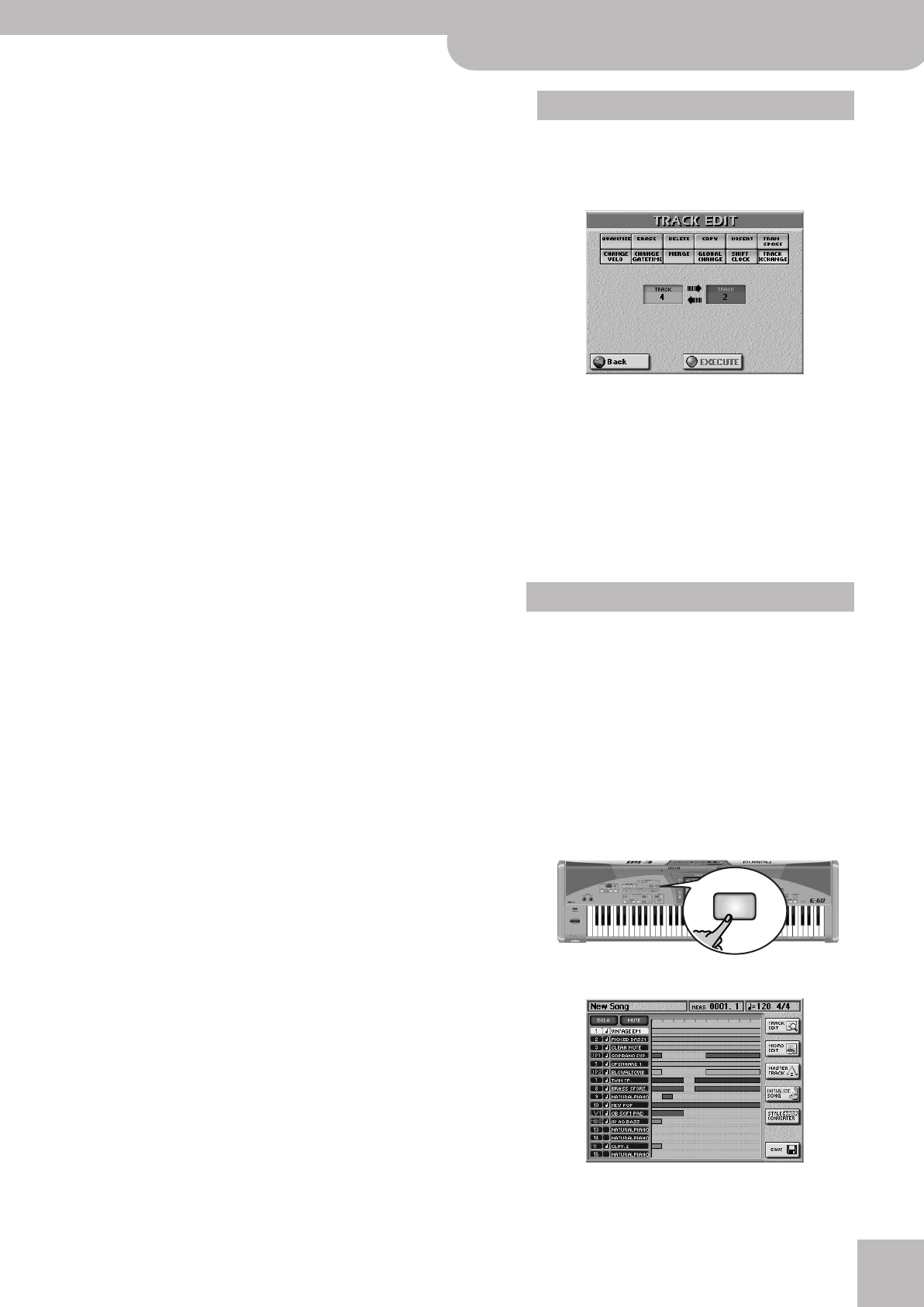
Editing 16-track songs
E-60/E-50 Music Workstation
r
139
● BEAT (1~[number of beats per bar])—Specifies the
beat position. The number of available beats depends on
the time signature in the selected area.
● CPT (1~119)—Refers to the last clock that should be
affected by the edit operation. Change this setting only
if your edit operation should not end exactly on the
selected beat.
■DATA TYPE
Allows you to select the data to be shifted:
When you select “Note”, a FROM NOTE and TO NOTE field
appear that allow you to set the upper and lower limit of
the notes to be copied. (See also “Fine-tuning the setting
range” on p. 132.)
■VALUE (CPT) (–4800~4800)
This parameter sets the amount by which the notes are
shifted. The value refers to CPT units (one CPT= 1/120 q).
Notes on the first beat of the first bar cannot be shifted
further to the left, because that would mean shifting them
to the “0” measure, which doesn’t exist.
■EXECUTE
Press this field to confirm your settings and edit the data.
TRACK EXCHANGE allows you to move the data of
the source track (left) to the destination track (right)
and –at the same time– the data of the destination
track to the source track.
■TRACK (1~16)
This is where you select the first track to be exchanged.
Obviously, there is no ALL option here.
■TRACK (1~16)
This is where you select the second track to be exchanged.
Obviously, there is no ALL option here. This track cannot be
set to the same number as the above.
Note: Be careful when exchanging a drum track and a
“melodic” track. The result may not be what you had in mind.
The E-60/E-50’s sequencer uses one track called “MAS-
TER” for each song. It is used for recording the time sig-
nature, the tempo, as well as general SysEx messages
that apply to all song tracks.
Note: You can only edit the MASTER track of songs that already
exist, so be sure to record or load a song beforehand.
(1) If necessary, select a (different) song.
This is not necessary if you want to edit the song you
have just recorded or played back. See “Working with
the Song Finder” on p. 110 (or page 35) for how to
load a song.
(2) Press the [16-TRK¥SEQ.] button.
The display changes to:
ALL All parameters listed below.
Note Only note messages.
P.Bender Pitch Bend data.
Control
Change
Control change messages.
Prog. C Program change messages.
NRPN Non-registered-parameter-number messages.
These are parameter control functions of the GS/
GM2 format that are easier to use than SysEx
messages (but basically have the same function).
RPN Registered-parameter-number messages. They
work like NRPN messages, and are understood by
many GM- and GM2-compatible tone genera-
tors.
CAF Channel Aftertouch messages.
TRACK XCHANGE
Editing the Master Track
16-TRK
SEQ.
E-60_50_OM_UK.book Page 139 Thursday, June 22, 2006 10:06 AM
